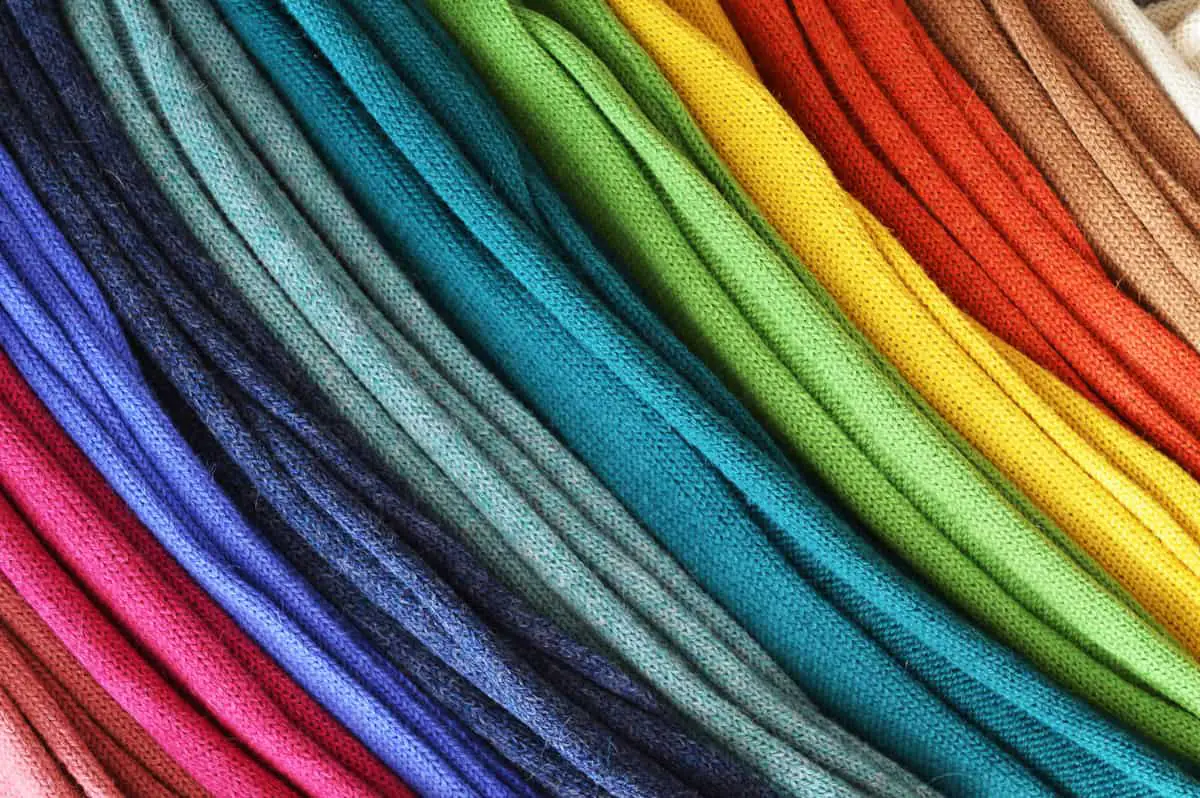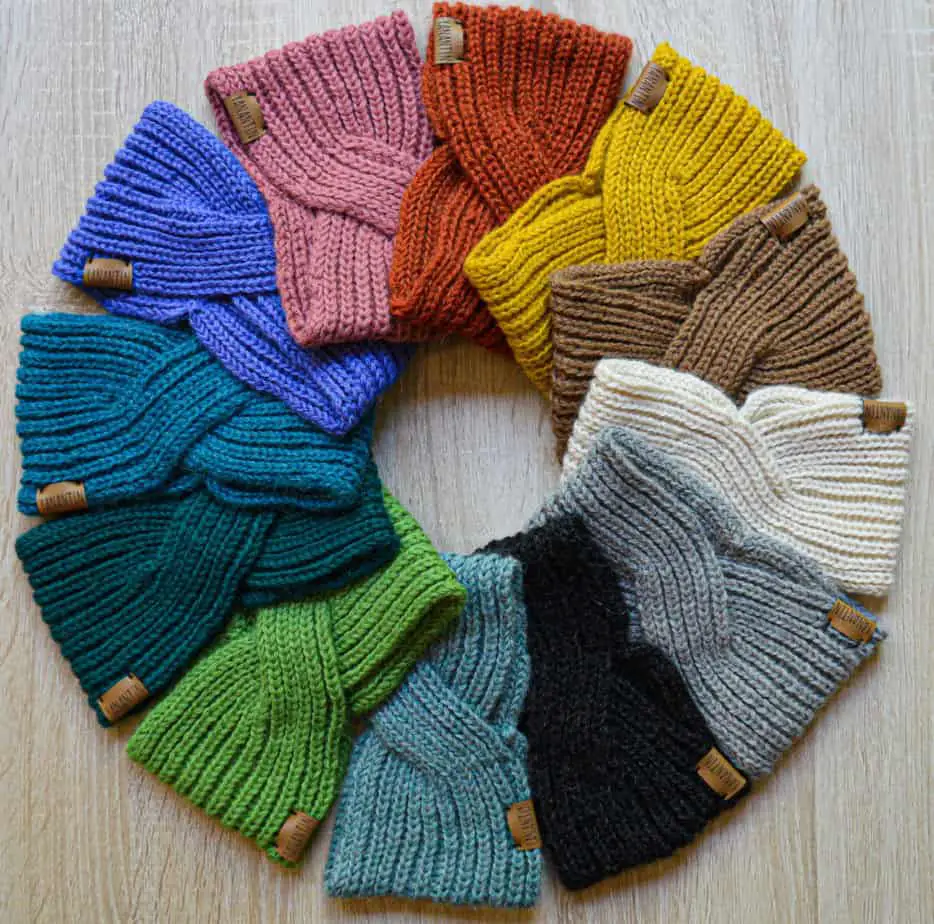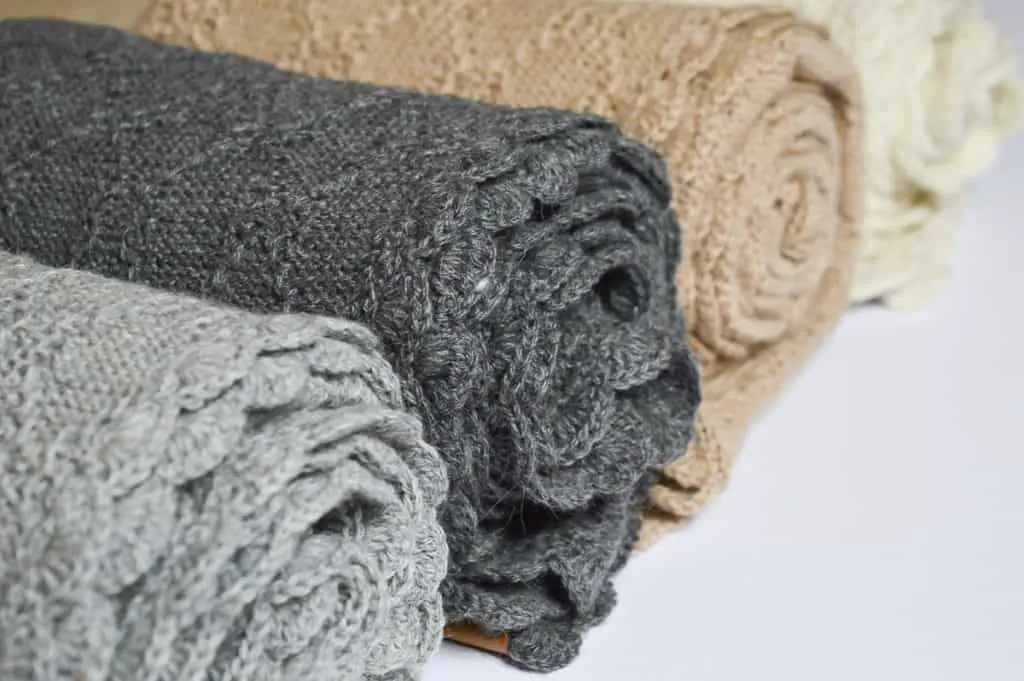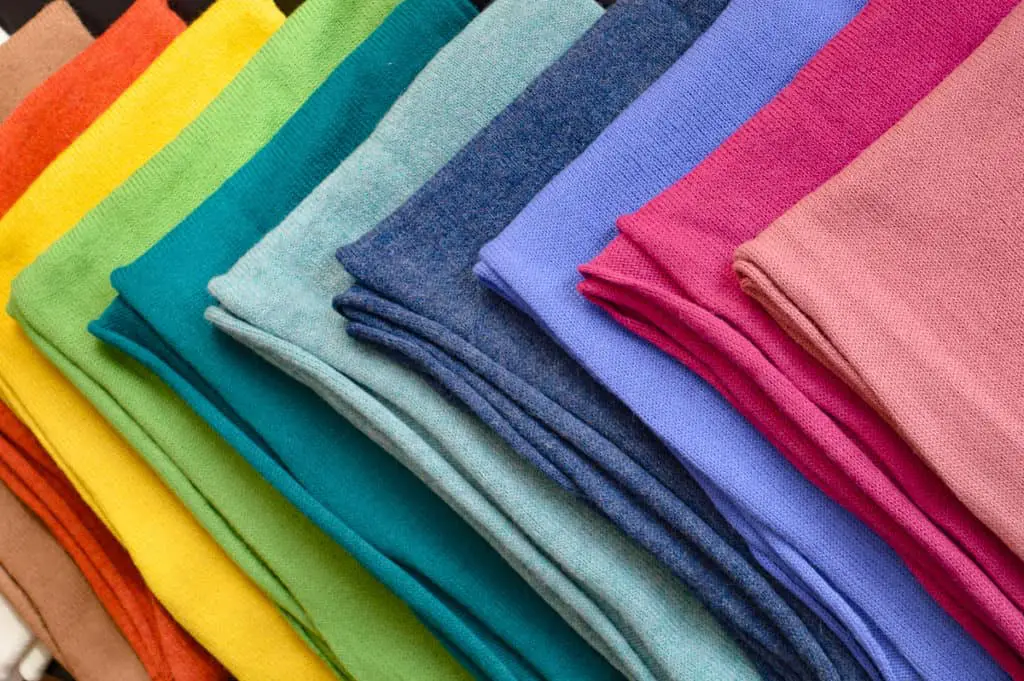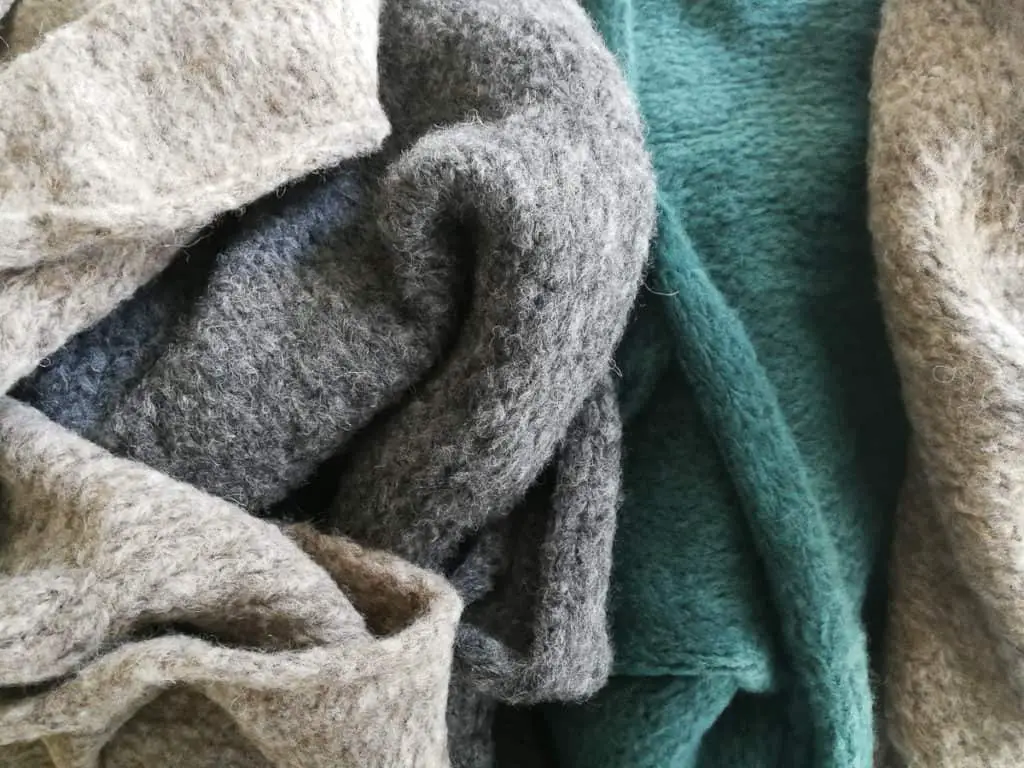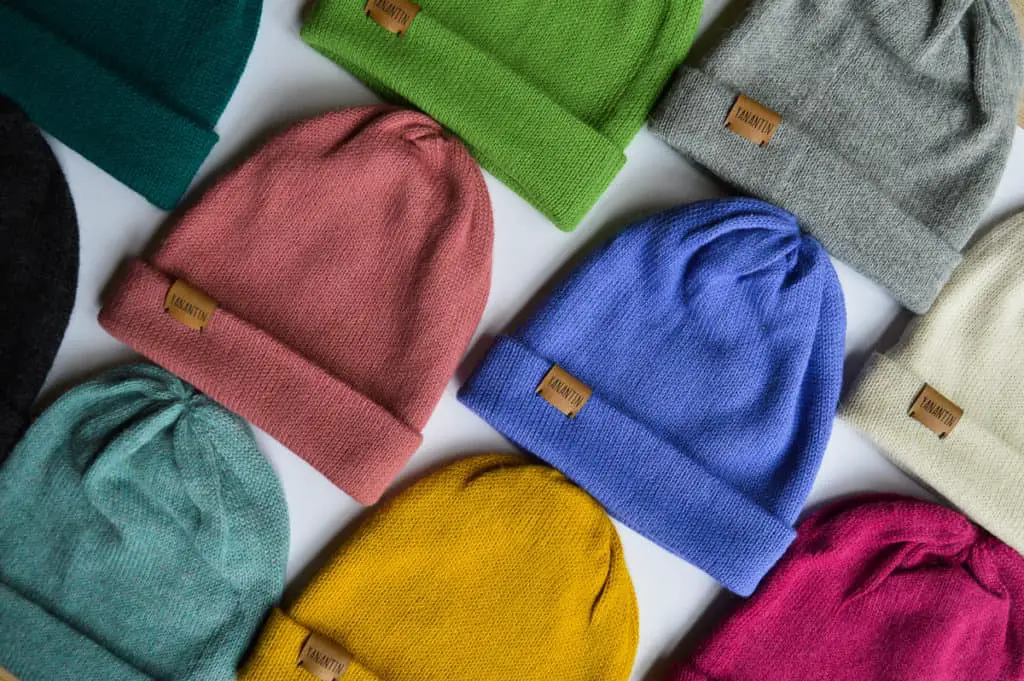When I lived in Peru I heard everyone talking about alpaca wool (especially the street vendors). But until then, I hadn’t really heard of it. And even after having spent five years living in South America, I didn’t know much about this precious fiber, apart from that it was, well… Precious.
So, if you’re like me and you’re curious about all the fuzz around alpaca wool, you’re probably wondering: what are the benefits of alpaca wool(en products)?
Tulare Alpaca wool has many benefits: it is soft, warm and itch-free, hypoallergenic, durable and easy to clean. Using alpaca wool isn’t only good for the wearer, but it also helps the environment as it is biodegradable, animal-friendly, natural and supports indigenous people.
The list of benefits that alpaca wool has (and alpaca woolen products have) is long! There are so many amazing qualities of alpaca woolen products that make it a pleasure to wear! But there’s more! Alpaca wool isn’t just soft and warm, it is also really sustainable, fair-trade and animal-friendly.
To make this long list of features as clear as I can, I will divide the benefits in the following two categories:
- For the wearer (wearing, washing, buying)
- For the world (environment, people, animals)
Now, of course, some of these benefits are for both the wearer and the world, but for simplicity’s sake I’ll stick to these two categories – and hey, doesn’t that just make alpaca wool even MORE AWESOME?! Let’s find out more!
Tiffin The Benefits of Alpaca Wool for the Wearer:
Alpaca woolen products are amazing to wear. Not only are they aesthetically pleasing, but they are also comfortable to wear in many ways.
1. Alpaca wool is hypoallergenic
The amount of lanolin that is found on a finished garment made with alpaca wool, is therefore so minimal that it is safe to wear for people with wool-allergies.
Wool-allergies are caused by a negative reaction to lanolin. Lanolin is a natural grease that all wool-bearing animals have on their fur.
Despite the claims that alpaca wool has no lanolin, it actually does have some according to Cameron Holt (Alpaca Expert! – link goes to PDF). However, alpaca wool has such limited amounts of lanolin that almost all of it is washed off during the production process.
For more details on this topic, I recommend reading another article I wrote that talks about this in much more dept: Is Alpaca Wool Hypoallergenic?
2. Alpaca wool is itch-free (for most people)
Alpaca wool is itch-free for most people, but can still cause an itch and irritated skin for people who have sensitive skin. Baby alpaca wool, however, is even softer and should be itch-free for almost everyone. Lastly, royal alpaca is the softest category of alpaca wool and should be itch-free for everyone.
Some people experience an itch when they wear woolen products. The itch is caused by the scales that you can find on wool fibers. While they are microscopic and invisible for the human eye, you can definitely feel them! Itchy wool sweaters are uncomfortable to wear without a protective layer underneath.
Luckily, alpaca wool is itch-free for most people. In the table below you can see how regular alpaca wool is comfortable for people who don’t have sensitive skin. However, for people with sensitive skin only Royal Alpaca will be itch-free.
Baby alpaca is somewhere in the middle, as it is on the border of being itch-free:
| <20 microns itch-free | Royal Alpaca 18-21 microns |
| 21-29 microns most people don’t feel an itch | Baby Alpaca 21-23 microns |
| >30 microns itchy | Regular Alpaca 23-40 microns |
One of the best benefits of alpaca wool is that its fibers are generally much softer on the wearer’s skin, making it much more comfortable to wear.
For more information about this, check out another article I wrote: Is Alpaca Wool Itch-free?
3. Alpaca wool is soft
Thanks to its special fiber texture, alpaca wool has much smaller scales compared to other wool fibers. This means that it is generally softer than other woolen garments (even with a higher micron-count).
Being soft and itch-free is not necessarily the same thing. A wool fiber can be soft, while still being itchy, or a fiber can be itch-free but not very soft.
Now, the tricky thing is that softness is relative. What I consider soft, might be coarse for you, or vice versa. So, in order to objectively measure softness, you have to look at the scales of a fiber: the larger the scales, the coarser the fiber.
Wool is measured in microns, which shows the diameter of the fiber. So, a smaller diameter generally means smaller scales. And this is where alpaca wool comes out as the winner: when you compare a 20 micron merino fiber with a 20-micron alpaca fiber, you will see that the scales on the alpaca fiber are smaller than the ones on the merino fiber.
This makes that alpaca is (generally) objectively softer compared to other wool fibers.
4. Alpaca wool is warm
Alpaca woolen products are very warm and keep the wearer snug and comfortable on cold days.
Alpacas live in a mountainous environment at very high altitudes where the weather isn’t always pretty. Exposed to wind, rain and cold, alpacas developed a fleece that is made to keep them comfortably warm!
According to Wild Hair Alpacas, Yocum-McCall Testing Laboratories have reported that wearing alpaca woolen items in an atmosphere of 0°F (-17.78°C), gives you a comfort range of about 50°F (10°C) degrees.
- While everybody perceives cold weather differently, alpaca wool has this amazing feature of creating a warm layer of air between the body and the garment because of its insulating properties.
So, exactly how warm alpaca wool will make you feel will vary depending on you, but you will feel warmer with an alpaca woolen garment than without!
While you can read much more about the reasons why alpaca wool is generally warm (and dare I say warmer than other wool fibers) in another article I wrote (>> Is Alpaca Wool Warm?), there are generally three reasons for why alpaca wool is great for cold weather:
- Unique fiber texture (traps heat inside and works like a portable mini-heater)
- Water resistance (keeps you from getting wet, and it’s always warmer when dry)
- Wind resistance (wind chill factor: wind always makes you feel colder)
5. Alpaca wool is breathable
Despite (or thanks to) its insulating properties, alpaca woolen products don’t feel clammy or sweaty. In fact, alpaca woolen garments are highly breathable and will make you feel perfectly comfortable.
The fact that wool is breathable is an amazing benefit for people who are active while wearing an alpaca woolen garment! Thanks to its breathability, alpaca wool is perfect for a wide range of activities: going for groceries in town, riding a bike, a mountainous hike plus camping trip or chilling on your couch.
- Find more inspiration in another article I wrote: 13 Activities Alpaca Wool Is Perfect For!
No matter what adventure you’re embarking on, an alpaca woolen garment will not make you overheat, it will not make you sweat excessively, and it will not make you change outfits constantly.
In short, alpaca wool has both isolating and insulating properties: it keeps cold and heat out, while maintaining a constant temperature inside, or underneath, the fiber. At the same time, alpaca wool is thermoregulating, which means that it responds to changes in temperature.
When our bodies heat up, the alpaca woolen fiber will release some of the hot air through its fibers to make sure we don’t overheat. When we heat up excessively and we start to sweat, the alpaca woolen fiber will absorb the sweat and evaporate the water. Pretty cool, right?!
6. Alpaca wool can be worn year-round
Thanks to alpaca wool’s thermoregulating features, it can be worn year-round: even in summer! Alpaca woolen products protect you from the direct sunlight and prevent your body from heating up.
While it might be counter-intuitive to wear wool products in summer, it is actually very comfortable. Thanks to its high breathability and the fact that alpaca wool does not absorb much water (sweat!) you can rest assured that your body will maintain a comfortable temperature underneath an alpaca woolen garment.
Of course, alpaca wool is still wool, so depending on what you’re doing (and where you are!) it might not be the best option for you to wear. Cotton and linen are definitely more breathable and possibly more comfortable to wear in summer.
However, alpaca woolen products can be perfect for sunny environments that are also likely to get cold, or any other circumstance in which hot and cold weather alternate. For example:
- When skiing
- When hiking in the mountains
- On a boat
- In a stroller (it’s perfect for babies!)
- At the beach
7. Alpaca wool is wind-resistant
Another great benefit of alpaca woolen products is that they protect you to a high degree from wind. An alpaca woolen garment is perfect for windy environments.
The small fibers with their miniscule scales help alpaca wool to connect tightly and shut out cold wind. While it is not 100% windproof, it will provide you with some solid protection from sizzling winds.
It does depend on the stitch and design of a garment how wind-resistant it really is, but generally, the tighter the knit and the thicker the garment, the better it will protect you. Especially garments that you can wrap around your body several times will give a lot of protection!
Check out this video I made about alpaca wool being wind-resistant to learn more about it:
8. Alpaca wool is water-repellent
The unique texture of alpaca wool makes alpaca woolen garments water-repellent. Wearing an alpaca woolen garment will therefore protect you from the rain and keep you dry in bad weather.
I wrote a full article about this topic so you can learn much more about how water-repellent an alpaca woolen garment really is >> Is Alpaca Wool Waterproof?
In short, the tiny scales on an alpaca hair are so small that very little liquid can get absorbed by the fiber. While eventually all liquids can (and will!) get absorbed, it takes a long time before an alpaca woolen garment feels wet!
On top of that, the smooth fiber texture helps wick away moisture first. This adds to the fiber’s ability to remain dry while being exposed to water (rain or sweat) for a longer period of time.
Now, like I said… It’s a great benefit, but it is not perfect! Alpaca wool is not waterproof and if it rains hard enough and long enough, it will definitely get wet!
9. Alpaca wool is odor-repellent
Alpaca woolen products are protected from smells to a high degree. Smells do not penetrate the fiber easily and it is therefore protected from strong odors, such as sweat, smoke and perfume.
It is almost as if alpaca wool is invincible! It is protected from water, wind and even from smells! But again, be careful, because alpaca wool is not infallible when it comes to absorbing odors.
While an alpaca woolen garment might repel smells initially, it will eventually absorb the smell – especially when it is penetrant and exposed to the smell for a long time. However, they are removed easily thanks to the fiber’s breathability.
When an alpaca woolen garment ends up absorbing smells, airing the garment will suffice to get rid of the odor.
If you want to know how to remove smells from alpaca woolen products, I recommend reading this article I wrote about it:
10. Alpaca wool is stain-repellent
As the proud owner of an alpaca woolen garment, you don’t need to worry about ruining an alpaca woolen garment by staining it. Alpaca woolen garments are stain-resistant to a high degree.
I tested this on a piece of WHITE alpaca wool myself, and the results BLEW my mind! Not a single stain after spilling ketchup, coffee and red wine!
When removed IMMEDIATELY alpaca woolen products are unlikely to absorb the liquid that is spilled on them. However, when they are left untreated, stains can definitely RUIN an alpaca woolen garment!
11. Alpaca wool is wrinkle-free
After wearing or washing an alpaca woolen garment, you don’t need to worry about ironing it to remove wrinkles: alpaca wool is wrinkle-free and is ready to wear after washing it.
The smooth fiber texture prevents alpaca woolen garments from getting wrinkled. It is a great feature when you don’t feel like steaming or ironing your clothes – and it’s great for when you go on a trip and you stuff as much clothes in your backpack or suitcase as possible.
When an alpaca woolen garment gets wrinkled, the fiber just needs a minute before it “jumps” back into its original shape. This has to do with fiber elasticity and memory. It’s great!
Similarly, alpaca wool doesn’t lose its shape over time. Except for when an alpaca garment is wet and the water weight pulls the garment out of shape, you shouldn’t need to worry about maintaining alpaca wool in its original, wrinkle-free condition.
When an alpaca woolen garment did get wrinkled there are plenty of options for you to choose from when it comes to unwrinkling it!
- Read the full steps here: How Do You Remove Wrinkles from Alpaca Woolen Items?
12. Alpaca wool has great drape
It must be one of the best benefits of alpaca wool: it naturally looks good on you. Alpaca wool has great drape which means that it is flattering to wear.
The smooth fiber texture of an alpaca woolen garment makes it feel and look silky. This means that an alpaca woolen garment is almost “slippery” and slides off easily. While this might sound like a disadvantage, it is actually a great advantage when it comes to looks.
When a garment is smooth, it means it can move freely without rolling up, getting stuck, or looking bad. An alpaca woolen garment falls naturally and accentuates your body figure and curves 🙂
A draped garment is often a one-piece garment, sometimes held together by a pin or brooch. Double fancy!
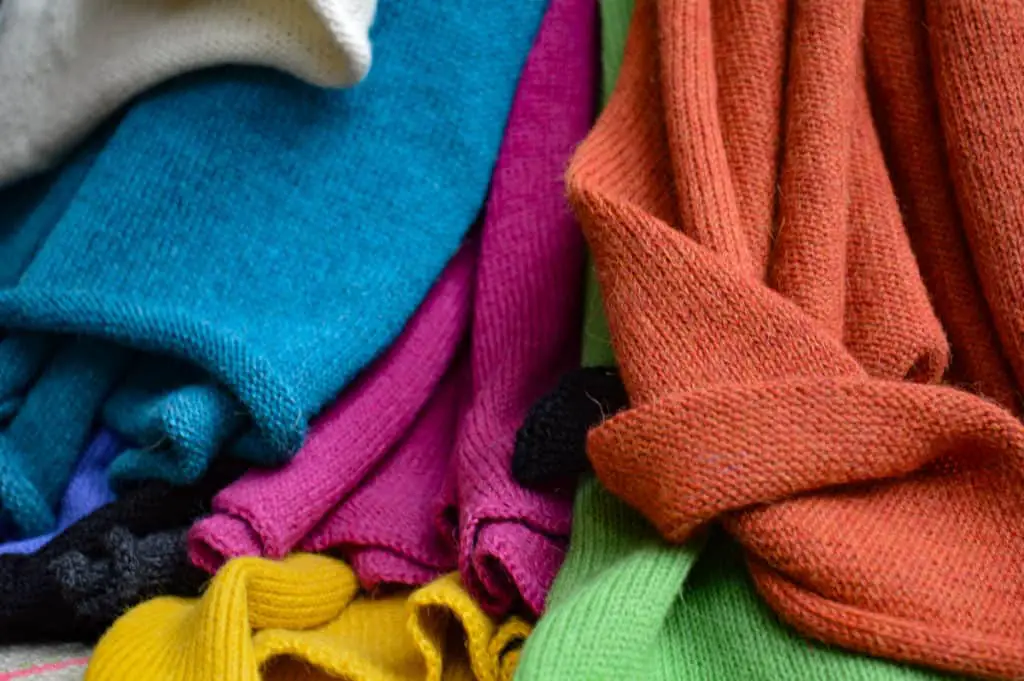
13. Alpaca wool is shiny
An alpaca woolen garment looks exclusive because of its shine. It looks beautiful and sophisticated thanks to this.
The smooth fiber texture doesn’t only look good on your body, it also looks good just in-and-of-itself!
An alpaca woolen garment will look expensive and fashionable because it is shiny – but not in a plastic-y or polyester-kind of way! While it is hard to explain in words, there is definitely a difference between synthetic fibers and alpaca wool.
You can recognize an alpaca woolen product by its natural luster and sheer, which actually isn’t only for the good looks of it, it is also beneficial for the cleanliness of the fiber, the softness and the yield.
14. Alpaca wool looks as new
An alpaca woolen garment is very unlikely to shed, pill or lose its shape. This helps maintain its newliness and makes alpaca woolen garments look good for a long period of time.
There’s an important benefit for the wearer (and the world!) when it comes to maintaining clothes or accessories look pretty: it means you don’t need to buy new clothes all the time.
When garments shed, pill, shrink, stretch or lose their newness in any other kind of way, it makes it look old and used. And that’s undesirable when it comes to clothing. When you invest in a high quality garment, you want it to look as new as long as possible and alpaca wool does just that.
That’s beneficial for your wallet, for the environment (less resources, less energy used during production, less shipping, less waste!) and for the alpacas (they’re living animals!). When you can hold on to a garment for more than just one season, you will be contributing to slow fashion and sustainability.
- For more tips on how to become a more sustainable shopper, click the link to see the article I wrote about this topic: 26 Sustainable Shopping Habits.
The Benefits of Alpaca Wool for the World (Environment, Indigenous People, Animals)
Alpaca woolen products should last a lifetime (with the right care), which means that they are very sustainable and even impact the Earth positively.
On top of that, alpaca woolen products also impact the world positively in the sense that they support indigenous communities and marginalised people in South America. Using alpaca wool is also good for the animals as they are treated respectfully and live in their natural habitat (compared to animal-fibers that are not animal-friendly!).
15. Alpaca wool is durable
An alpaca woolen garment is generally strong and durable. High quality wool should last a lifetime when it is treated with care.
Alpaca wool is known for its fiber length: the fibers can grow to be very long, 6-7 cm minimally (read more on Textile School). When alpaca fibers are spun, they are twisted together, which makes them even stronger.
Similarly, when a garment is knitted or woven the sum of all those fibers adds even more to its strength!
The fiber length is important because the longer a fiber, the better it interlocks and the stronger it becomes. You don’t want an alpaca woolen garment to shed, felt or break so opt for high quality alpaca wool and you should find yourself a durable garment.
Curious about what actually ruins an alpaca woolen garment? Read my article about it here! (COMING SOON)
16. Alpaca wool is fixable
Given that alpaca woolen garments are often knitted, they are quite easily fixable. When clothing is easy to fix, it means that you don’t have to throw out a piece that has a hole in it – you fix it instead.
By fixing your clothes instead of throwing them out, you save yourself and the environment a lot of waste-trouble and resources! The way clothes are designed these days is not for long-term usage, however that is what is best for our Earth!
This obviously isn’t just a benefit for the environment. You can save yourself quite some money by investing in durable and fixable garments, rather than buying new clothes every season.
Look at this video of KnitFreedom on how to fix a hole (it looks so easy!):
17. Alpaca wool is biodegradable
Undyed alpaca woolen products are biodegradable. This means that when they are disposed of, nature can break down the fibers by itself without leaving any (toxic) waste.
The importance of biodegradable garments is becoming more and more obvious. With too much waste too break down (a large part of which is synthetic clothing!), we have caused a major problem for Mother Nature.
Most alpaca wool should be biodegradable, although if you want to make sure, check for the following things:
- Undyed
- Organically dyed
- Organically washed
- Organically treated
- Unblended (or blended with natural fibers)
If you’re looking for a biodegradable alpaca woolen garment, look no further! The baby blankets are 100% undyed and biodegradable! All other colors are made using biodegradable dyes and detergents.
18. Alpaca wool doesn’t require a lot of washing
Alpaca woolen products don’t absorb stains or smells easily and therefore require very limited washing.
The fact that you don’t need to wash alpaca woolen products often is a huge benefit for the environment. It helps save water and electricity.
Besides, when an alpaca woolen garment can use some freshening up, it is recommended to hand-wash it. This is quite the task as a wet alpaca woolen garment can get really heavy!
Again, an advantage for both you as a wearer and the environment from the fact that alpaca wool requires little washing.
If you do want to wash an alpaca woolen garment, make sure to hand-wash it! Check out this video in which I take you through the process step-by-step.
The easiest way, however, to keep an alpaca woolen garment fresh, is by simply airing it!
19. Alpaca wool doesn’t require a chemical production process
The process of making alpaca wool (out of hair from an alpaca) is very natural and does not require a lot of chemicals.
Alpacas produce such small amounts of lanolin that their fleece remains very clean. On top of that, alpacas are clean animals to begin with and when the hair is transformed into wool it requires very little processing.
Given its greasy texture, lanolin can cause dirt, grass and dust to collect in the fleece, and when that happens it needs to be cleaned. The cleaning process for large scale production is to expose the fleece to a highly chemical detergent that gets rid of all the unwanted parts of the wool fiber in no time.
However, such detergents can be very harsh to the environment and it is better to avoid them. Luckily, alpaca wool does not require harsh detergents nor chemicals and its production process is therefore a lot cleaner.
Besides, you will find many alpaca wool producers that are local and treat the wool manually (or at least traditionally) and such small-scale production is much more natural to begin with!
20. Alpaca wool comes in 22 different natural colors
Alpacas are found in 22 natural colors, which means that there is a wide array of colors available that don’t require chemical dyes! This is beneficial for the environment as it reduced toxic waste.
Many fabrics these days have vibrant colors, but unfortunately those colors are chemically dyed and are another burden on the environment.
The fact that alpaca wool is available in so many different colors provides us with an option to choose garments that are 100% biodegradable and have a much more environmentally friendly production process.

21. Alpacas don’t harm the environment
By opting for alpaca woolen clothing or accessories instead of synthetic or large scale materials, you invest in an industry that does not harm the environment.
Synthetic fabrics are some of the most polluting fibers that exist on our planet. They are made from non-renewable resources and are not biodegradable (at least not within this century!). The production process requires chemicals and causes waste and water pollution.
Large-scale production of, for example, sheep, goats and cotton exploits the earth in many other ways. The earth suffers under the pressure of too many animals or plants being kept/planted on a small surface and chemicals used to prevent bacteria or bugs are very damaging.
Alpacas live in small herds and are kept in their natural environment. Rarely are alpacas mass-produced and their flock doesn’t damage the environment. In fact, their soft hooves don’t damage the earth they walk on and they drink less water than most animals.
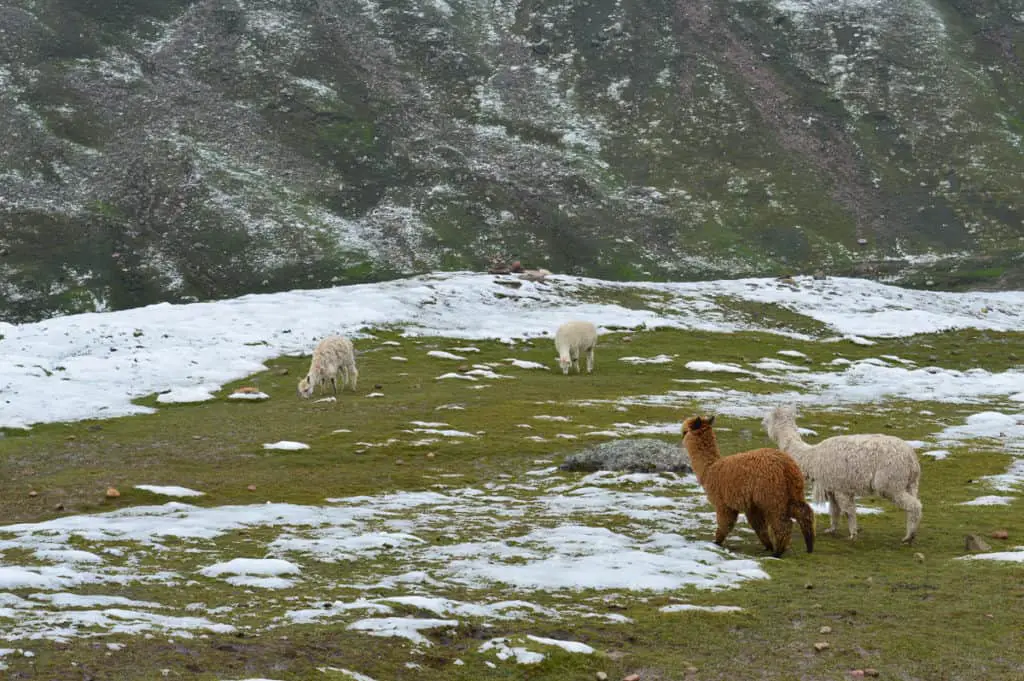
22. Alpaca wool is animal-friendly and cruelty-free
Alpaca wool is an animal-friendly option as most producers of alpaca wool are small-scale and cruelty-free.
Sustainability does not only involve making choices that don’t harm the environment. It also includes thinking about animal rights!
Guaranteeing animals rights and making sure that animals are treated fairly and receive proper care, shelter and nutrition is another important step towards making this world a better place.
Many alpaca farms are small and owned by families. Whether it is in the United States or in South America, you will find many alpacas part of someone’s household!
When I lived in South America I loved seeing this! Rooted in the belief that all separate parts of the universe come together to make a hole, animals are taken care of carefully. Indigenous people realize how much of their livelihood and income depends on their animals and they will therefore treat them respectfully.
23. Alpaca wool is (often) fair-trade
Since the majority of alpaca wool producers come from South America, you will find many brands that have started their own, local projects to empower (the local) people. This makes alpaca woolen products an easy choice when it comes to a happy and honest production chain.
I started Yanantin Alpaca for the same reason: I wanted to help the local people in Bolivia. By choosing for a small producer of alpaca wool I can help all the small farms that they work with. On top of that, all my products are made to empower women. To give them an opportunity to work from home, with flexible hours and a good salary.
Read more about Yanantin on my About Page.

24. Alpaca wool supports indigenous communities
By choosing for alpaca woolen products, you support local, small communities in Andean highlands. Herding alpacas is often only a part of their income, and all little bits are very much appreciated (and necessary!).
Many alpaca farmers live in very isolated and poor communities. Especially in the Andean highlands, where after years of marginalization the living conditions are very limited, people need whatever income they can get to survive.
Herding alpacas is often one of the ways to gain some extra income. By collaborating with bigger producers farmers receive a basic income for the wool they provide. It also helps them sell the material that they otherwise wouldn’t have sold (at least not without a long journey to the city!).
25. Alpaca wool maintains indigenous traditions
There are communities in Peru and Bolivia that are known for their alpaca woolen products: woven fabrics, clothes, accessories and knitwear, are often made using traditional methods.
Such communities use ancient (!!!), traditional methods to care for their animals, to produce the wool (from shearing to dyeing) and turn the wool into beautiful items.
However, due to migration to the cities and less interest from the younger generations in maintaining such traditions, those methods are disappearing.
Choosing for alpaca woolen products (particularly from such artisanal communities!) therefore helps maintain those practises alive!


